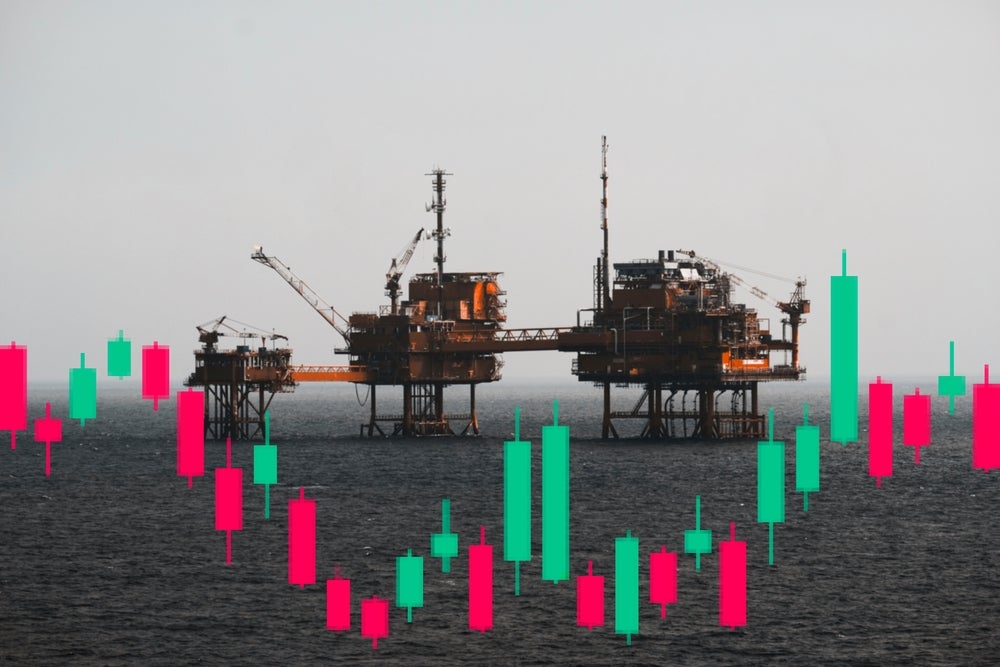Oil’s Slippery Slide: What USO And XOP ETFs Reveal About Energy Market Panic – CNX Resources (NYSE:CNX), Devon Energy (NYSE:DVN)

While crude prices continue to decline, oil-linked ETFs are not only being watched for their price action but also for the insight they provide into sentiment across various segments of the energy sector. Two of the most heavily followed funds—United States Oil Fund USO and SPDR S&P Oil & Gas Exploration & Production ETF XOP—provide different perspectives on how market players are positioned on oil volatility.
United States Oil Fund
USO is intended to replicate the daily movements of West Texas Intermediate (WTI) crude oil futures. It does this mainly through holding near-month NYMEX futures contracts, and as such, it is extremely vulnerable to short-term changes in the price of oil. The ETF owns a series of front-month WTI futures contracts and rolls them over on a monthly basis. This exposes the fund to contango and backwardation, two states in the futures curve that can either drain or enhance returns independent of spot price direction.
Also Read: Oil Drops Below Key Support: Is $55 The Next Stop For West Texas Intermediate?
Through April 29, USO has dropped almost 3% as of writing, echoing weakness in crude. For the past month, its decline, at more than 14%, has intensified as Brent and WTI are on track for a bad month.
USO tends to function as a short-term tactical trading tool instead of a long-term investment tool. Its April movement indicates increasing angst regarding short-term demand destruction with trade disruptions, risk of oversupply, and macroeconomic weakness.
SPDR S&P Oil & Gas Exploration & Production ETF
Whereas USO tracks the commodity, XOP invests in an equal-weighted index of U.S. energy stocks that are engaged in upstream oil and gas production. The ETF offers diversified exposure to small- and mid-cap exploration and production (E&P) companies. Its equal-weighting approach minimizes concentration risk but maximizes volatility, particularly in times of declining oil prices.
Top Holdings: CNX Resources CNX, Marathon Petroleum MPC, and Exxon Mobil XOM are among the fund’s top holdings—companies that are more exposed to commodity price fluctuations because of their relatively high-cost production and capital sensitivity.
XOP fell 0.9% Tuesday afternoon, although it has beaten USO on a relative basis over the last few weeks. That is possibly driven by a perception that equities—particularly those with solid balance sheets—can better withstand short-term price dips than the futures curve.
XOP will be ideal for investors looking for leveraged exposure to oil prices through equities when prices are moving higher. Yet, in a bear market like the current one, its small-cap bias makes it a riskier play.
Sentiment Shifts
Brent crude dropped below $63.96 a barrel on Tuesday afternoon, while West Texas Intermediate (WTI) was around $60.34—both lower for a second straight session. Brent, which has dropped 16% year-to-date, is now set to register its biggest monthly drop since 2021, a reflection of growing worries over weakening demand and geopolitical uncertainty.
At the same time, OPEC+’s hint at bringing production levels back online is exerting downward pressure on prices, with oversupply fears rising as much as the demand outlook weakens, according to Bloomberg.
Geopolitical events are further complicating matters. Negotiations between Tehran and Washington on Iran’s nuclear program have given tentative indications of progress. If diplomatic efforts result in sanctions easing, Iranian crude might return to global markets—a bearish oil price catalyst once again.
Investors in oil ETFs are also getting hit. As their prices decline, USO and XOP are experiencing increased volume as investors rethink their energy exposure in light of the increased uncertainty.
Looking forward, markets will be waiting to see economic data this week that can provide more clarity on trading conditions. Meanwhile, oil ETFs remain an important gauge of investor sentiment, capturing the fine balancing act of forces at play in the global energy market.
Read Next:
Photo: Shutterstock



